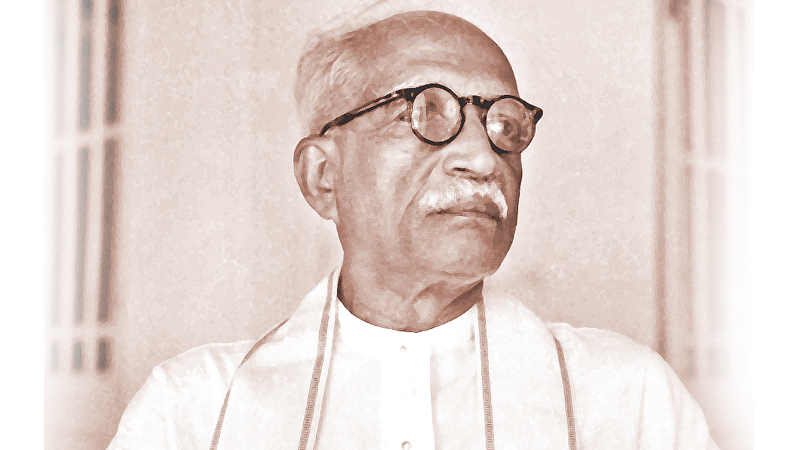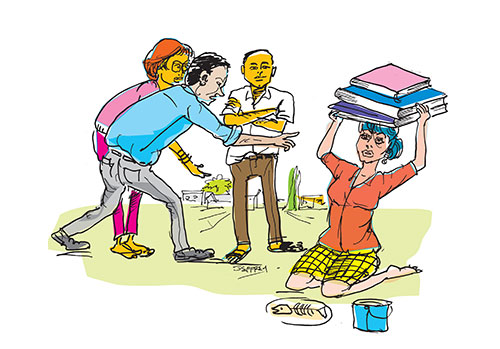By Kaushalya Perera
A couple of years back, at a workshop on graduate employability (sponsored by World Bank loans), we were told that producing graduates was like producing cars. The buyers – potential employers – want to know what they are getting. Let’s consider this analogy at face value. We would then remember that the quality of a car depends on not one but multiple things, of which labour is a significant issue, as the Michigan automobile industry realized last year.
Labour issues in state universities
We too, in Sri Lankan universities, have labour issues, which impact the quality of our work and the education of our students. Recruitment and retention of teachers, in state universities, has been a problem for a long time, and has come to a head, at present.
Over the last two decades, student intake, into state universities, has increased: 9,245 in 1995, 25,676 in 2015 and almost 44,000 in 2021. From 2015 to 2021 alone, the student intake increased by over 70%. As a point of comparison, the number of school students (primary and secondary) has been stable – from 342,386 in 1995 to 337,450 in 2021. Academic staff recruitment to universities has not increased comparable to undergraduate intake. On the contrary, recruitment is regularly frozen, justified by a lack of ‘treasury funds’.
At any given point, a university will have a number of unfilled academic staff positions. Even when the Treasury allows recruitment of permanent cadre, outdated criteria and internal politics create difficulties.
Despite calling for inter-disciplinarity, the UGC’s criteria for lecturer appointments consider the first degree’s relevance more important than that of postgraduate qualifications. Anecdotes abound of applicants not being recruited because, despite having very relevant postgraduate degrees, their first degree was in a field different from that of the department.
As in other sectors, cronyism and discrimination are systemic issues in the sector. Candidates can be hired, or rejected, based on their caste, gender, ethnicity and class associations. Another disturbing tendency is the hiring of one’s own alumni. At times, the letter of the regulation can be used to discriminate against candidates, e.g. where the clause on the first degree’s relevance is used to reject an applicant with suitable postgraduate qualifications but with a seemingly non-relevant (narrowly defined) first degree. The scarcity of positions, and discriminatory practices combined, create a space where contract staff and probationary staff, awaiting confirmation, can be silent on harassment and discrimination for fear of jeopardising their career. Such practices ensure a deeply hierarchical environment, with each lower rung in the hierarchy beholden to their senior colleagues.
Systemic issues in governance are also at play here. In recent years, a financial logic has decided the ‘efficiency’ of academics’ work. While a lecturer does many additional administrative duties, and is expected to do research, the calculation of ‘work’ is made based on two things: individually, how many hours, or courses, one teaches; and as an institution (or department, faculty), the ratio of the number of lecturers to the number of students. Unlike in the first world universities that are held up as models for us, time spent on teacher preparation, assessments, research and administrative duties are not part of this auditable calculation. The audit logic asks questions such as ‘if a department has 500 students, why does it need 25 lecturers? Why can’t it offer this degree with more efficiency, using 10 or 5 lecturers?’ If the ratio is unbalanced, i.e., with lesser students per lecturer than mandated, departments would find it difficult to lobby for yet another lecturer, even if that person was qualified in a current or important area of research. From the perspective of auditors, and increasingly of university administrations, it does not matter if a linguist teaches literature or a statistician teaches debt sustainability as long as the ratio is maintained.
Crisis related labour issues
A more recent trend, supposedly ensuing due to the economic crisis, though in line with the financial logics governing us, is for universities to drastically reduce contract staff, i.e., visiting and temporary lecturers. Typically, such staff are hired if a department does not have personnel for a specialized subject or if staff is inadequate to teach the number of students. Retirements, leave, or starting new programmes, can amplify these problems. The lecturer: student ratios and course-load requirements trump the need of a department to hire contract staff to offer a course in a specialized field or when they desire to introduce newer, timely courses. If the department wants to offer, for example, a course on the impact of the climate crisis on urban living, the department must now ask an existing lecturer to teach it even if they have no understanding of the area; alternatively, they can decide not to offer such courses since the administration does not support new recruitment of any type.
Recent government measures to address the economic crisis have also damaged already deteriorating and debilitating work conditions. The government circular of August 2022 allowing employees of state institutions to work in foreign countries, while keeping their job and even their seniority on condition that they remit foreign currency to Sri Lanka, applies to university non-academic and academic staff as well. A comment under a news article asked who would employ “these pieces of deadwood”? Ironically, the increased number of leave-taking and resignations in the sector shows that university staff are certainly employable in other countries. What this means for the remaining staff, in state universities, is a larger workload. As a consequence, less time will be available to spend on quality teaching, timely and thoughtful assessment and research and writing. The country loses much. From my own circle of colleagues, anthropologists, disability specialists and teacher trainers have left the country for – not merely better pay – but better working conditions. The situation is as dire in other faculties, e.g. medicine, dentistry and the allied health sciences, as there is a high demand for healthcare workers, internationally, after the pandemic.
Meanwhile, after reducing the funds for education, the government has asked universities to spend funds generated on their own (through fee-levying courses) for general upkeep and maintenance, from buying paper to repairing student bathrooms. Some postgraduate institutes have not been provided money for staff salaries, despite such appointments being permanent appointments similar to others in universities. Money for research, generally considered a less important expense, has dried up in state universities since last year.
If you want good cars …
The country wants skilled graduates. Young citizens who can develop the country. But for at least two decades, it has not been willing to increase the number of academic employees. On the contrary, successive governments have frozen or reduced recruitment and impoverished state universities. The current government’s contribution to this decline is to provide far less funds than before, while helping siphon off Sri Lankan experts from state universities to other countries. If the government follows its own logic of imagining higher education as akin to car production, their investment in it should be far beyond what it is now.



